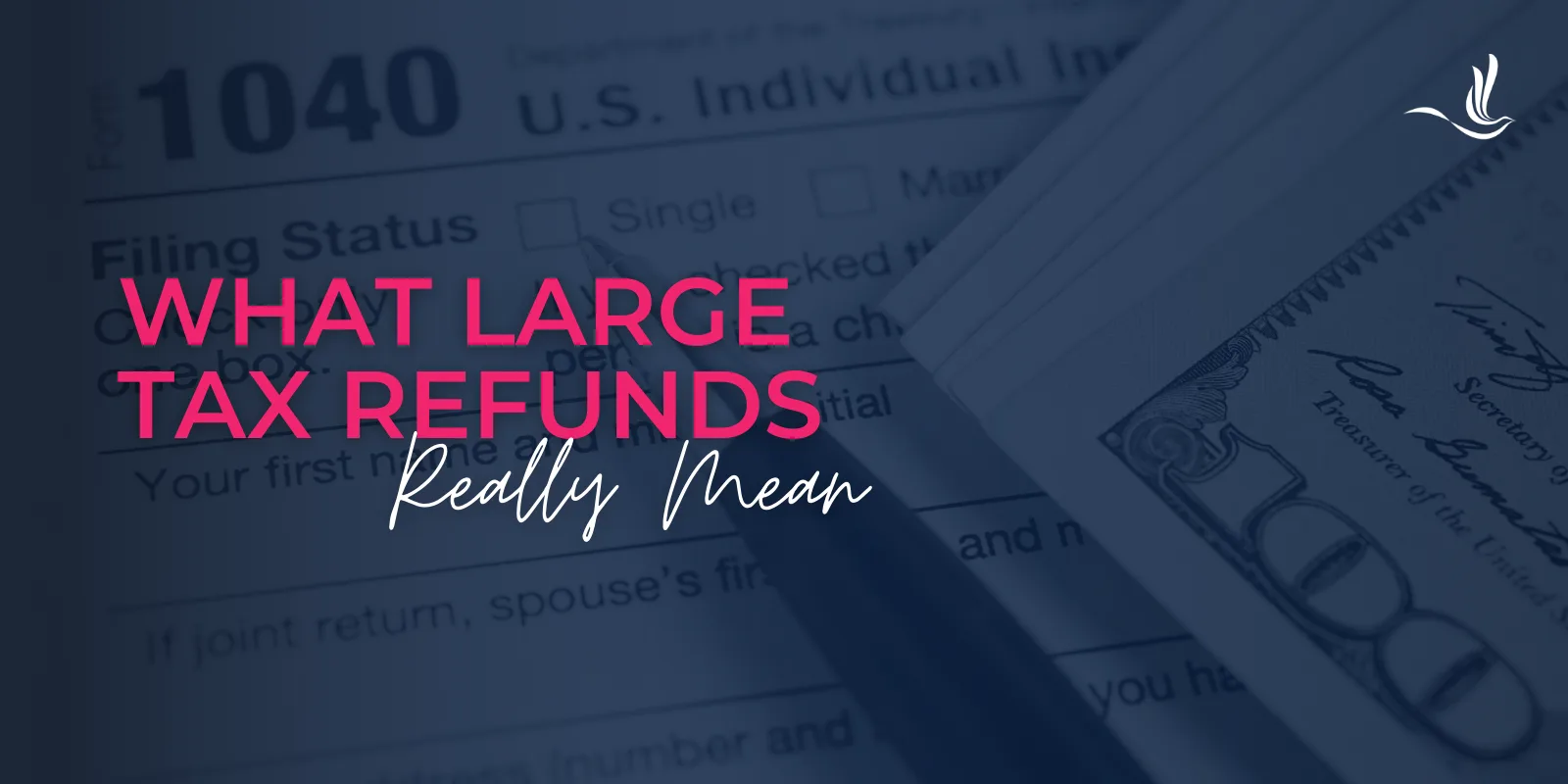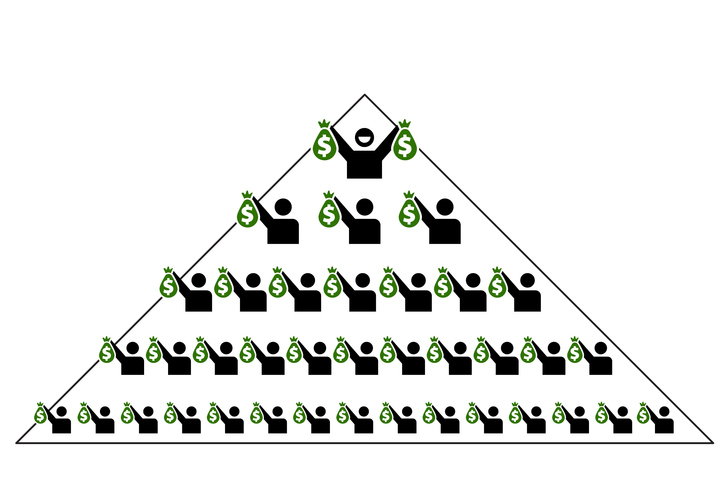Each year, millions of Americans eagerly await their tax refunds. For many, it feels like a financial windfall—a check from the government that brings temporary relief, fuels major purchases, or even funds vacations. But is receiving a large tax refund a bad thing? What if, instead of a reward, it’s actually a red flag? In this article, we’ll break down what large tax refunds really mean, why they happen, and how they fit into your overall financial picture.
What Is a Tax Refund?
At its core, a tax refund is the return of your own money. Basically, it’s money that was overpaid to the federal or state government during the year. When you earn income, whether through a job, self-employment, or another source, the IRS requires that taxes be paid throughout the year. This is usually done through withholding from your paycheck or by making estimated quarterly payments.
If, at the end of the tax year, the total amount you paid exceeds what you actually owed based on your income, deductions, and credits, you receive a refund for the difference. In simple terms, it’s a repayment of excess taxes collected from you. So, why is receiving a large tax refund a bad thing? Many people treat this refund as a bonus, but in reality, it’s just a sign that you gave the government more than you needed to.
Why People Receive Large Tax Refunds
There are several reasons why taxpayers might end up with a sizable refund at tax time.
Withholding Too Much
One of the most common is over-withholding. When you start a new job or experience a change in life circumstances—such as getting married or having a child—you’re asked to fill out a W-4 form. This form helps your employer calculate how much tax to withhold from each paycheck. If you don’t update your W-4 to reflect major life changes, or if you simply opt to withhold more “just in case,” you could end up with too much tax taken out throughout the year.
Tax Credits
Tax credits can also play a significant role. Refundable credits, such as the Earned Income Tax Credit (EITC) or the Child Tax Credit, are designed to benefit taxpayers who meet certain income thresholds or have dependents. Unlike non-refundable credits, which only reduce your tax liability to zero, refundable credits can result in a payment back to you, even if you owe no tax. This means that someone with a modest income and two children, for example, could qualify for several thousand dollars in refundable credits, significantly boosting their refund.
Changes in Income
Another common scenario involves taxpayers who experience changes in income. A person who is laid off partway through the year but continues to have withholding taken out as if they were earning their full salary may end up overpaying. Similarly, someone who pays large deductible expenses—such as mortgage interest, medical bills, or tuition—may see a refund even if their income and withholding didn’t change much. In all of these situations, the refund results from a mismatch between what was paid throughout the year and what was actually owed.
The Downsides of Large Refunds
While it may feel nice to receive a big check in the spring, there are some important drawbacks to consider. First and foremost, a large refund means you’ve been giving the government an interest-free loan. That money could have been in your hands months earlier, earning interest in a savings account, reducing high-interest credit card debt, or funding other financial goals.
Let’s say you received a $4,800 refund this year. That works out to $400 a month you could have been using more effectively throughout the year. Instead of waiting until tax time, you could have been putting that money toward a car payment, investing in your retirement, or creating a stronger emergency fund.
There’s also a psychological component. When people receive large refunds, they often feel justified in spending them frivolously. Without a plan in place, a refund can be quickly squandered on temporary indulgences rather than being used to support long-term financial security. Many Americans fall into a cycle of over-withholding and then using their refund as a kind of forced savings plan, only to blow through it each spring. In reality, financial discipline doesn’t come from withholding more than you need to—it comes from budgeting, saving intentionally, and staying aware of your income and expenses.
How to Adjust Your Withholding
If you’ve received a large refund and would rather have that money throughout the year, the first step is to adjust your W-4 with your employer. This form was redesigned in 2020 to make the process more accurate and transparent, but it still requires some attention to detail.
Using the IRS Tax Withholding Estimator—an online tool provided by the IRS—you can enter information about your income, dependents, deductions, and credits to get a personalized recommendation on how to adjust your withholding. Based on that, you can complete a new W-4 to reflect your current financial situation.
Let’s say you’re a single filer earning $60,000 per year, and you received a $3,000 refund last year. After using the IRS estimator, you learn that you could safely reduce your withholding by $250 per month and still break even at tax time. By submitting a new W-4 and increasing your monthly take-home pay, you now have extra funds each month to support your financial goals.
It’s also important to review your W-4 any time your situation changes—whether you get married, have a child, take a second job, or experience a significant shift in income. Keeping your withholding aligned with your tax liability ensures that you’re not consistently over- or under-paying.
When a Large Refund Can Be a Good Thing
There are situations where receiving a large refund can actually be beneficial. For some people, a refund acts as a form of forced savings. If you know that you struggle to save money on your own or that you’re likely to spend it if it hits your bank account, then over-withholding can serve as a psychological tool to protect you from yourself.
Additionally, for taxpayers with unpredictable income—like freelancers, seasonal workers, or small business owners—it can be tough to estimate tax liability accurately throughout the year. In these cases, intentionally withholding more or paying higher estimated taxes might be a strategic move to avoid underpayment penalties.
One-time life events also skew the picture. For example, someone who had a child, went back to school, or paid for expensive medical care may qualify for new deductions and credits they didn’t plan for. The resulting refund isn’t necessarily a sign of poor planning—it’s a product of a unique year. However, it’s still wise to use that refund strategically rather than treating it as a bonus.
How to Use Your Refund Wisely
If you do end up with a refund—whether by accident or design—the key is to use it with intention. Rather than spending it impulsively, consider how that money can support your long-term financial well-being.
One of the smartest uses of a refund is to build or pad your emergency fund. Having three to six months of expenses saved can protect you from unexpected setbacks like job loss or medical emergencies. If your emergency fund is already in place, you might use the money to pay off high-interest credit card debt, which can significantly reduce your financial burden over time.
Another excellent option is to invest in your future. Contributing to a retirement account, whether it’s a traditional IRA, Roth IRA, or workplace plan, can provide long-term growth potential and, in some cases, additional tax benefits.
Some taxpayers also use their refunds to further personal or professional development. This could mean paying for additional training or education, starting a side business, or investing in tools that make you more productive or profitable in your work. Ultimately, the goal is to treat your refund as a tool—not a treat. By aligning it with your goals, you can turn a temporary boost into a lasting benefit.
Tax Help in 2025
Receiving a large tax refund may feel like a victory, but in most cases, it’s a signal that your tax strategy could use some fine-tuning. Rather than giving the government more of your money than necessary, consider adjusting your withholding to keep more in your paycheck throughout the year. While there are cases where a large refund makes sense, the key is to be intentional. Understand why you received the refund, decide whether it makes sense for your situation, and make changes if needed. Optima Tax Relief is the nation’s leading tax resolution firm with over a decade of experience helping taxpayers with tough tax situations.
If You Need Tax Help, Contact Us Today for a Free Consultation




























